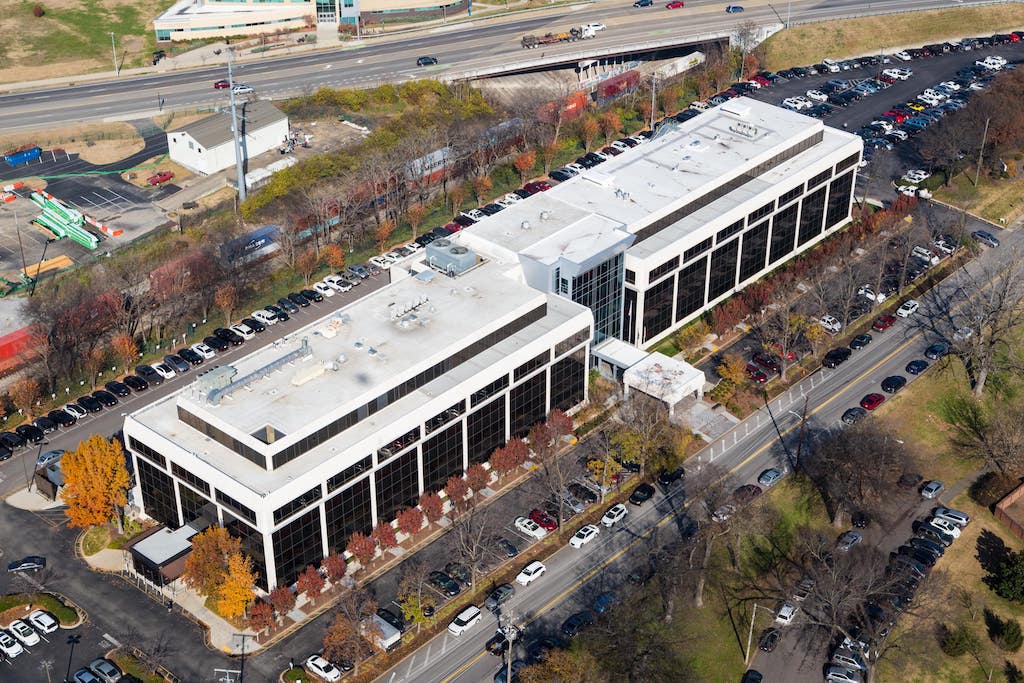Fall is often a welcomed season by all, as the summer heat can leave us anxious for cooler weather—not to mention the changing leaves and all things pumpkin. But, no matter the season, preparations must be made—especially when it comes to roofing. For commercial roofs, having a service and maintenance checklist for fall is just as important as it is for winter and summer.
So, as we enter the fall season with its changing temperatures and weather, here’s our team’s list of commercial roofing maintenance must-dos.
If you have a low-slope commercial roof…
1. Inspect areas around HVAC units.
Low-slope commercial roofs are often helpful for keeping HVAC units off the ground and out of sight. However, heavy equipment atop a flat roof can cause breakage in the roofing membrane and lead to leaks or moisture infraction. Thus, inspecting these areas is highly recommended each season.
2. Check for organic debris build-up.
Low-slope commercial roofs can be prone to organic debris build up in gutters, around roof drains, or any other drainage points. If organic debris is not removed from the roof system, it can be the cause of water infiltration into the building. Draining points need to stay clear of debris to promote positive drainage and allow water to clear off the roof, rather than building up and backing into the building. Preventative maintenance calls are great to visually inspect the roof and remove such debris from the system.
3. Monitor roofing around skylights or diffusers.
Many low-slope commercial roofs have rooftop penetrations like skylights and diffusers that allow for more natural light and balanced ventilation in large facilities. If your building has these fixtures, be sure to monitor any flashings or seals around them to ensure there are no leaks or potential damage.
4. Review any high-traffic areas.
As many flat or low-slope commercial roofs are friendly for walking—and some can even have rooftop bars or decks—it’s important to monitor any high-traffic areas to make sure there are no cracks, deterioration, or compromised areas.
If you have a sloped commercial roof…
1. Carefully assess roofing materials.
Depending on the material used for sloped commercial roofs—including asphalt, metal, shingles, or tiles—it’s important to assess your commercial roofing materials for any erosion or damage. If shingles or tiles are used, look for any that might be missing from heavy winds. You’ll also want to be on the lookout for any damaged or corroded panels on metal roofing.
2. Inspect any seams or flashing.
Sloped commercial roofing will obviously have seams and flashing. As these areas can be a magnet for where water will make its way to gutters, it’s imperative to inspect seams regularly to ensure they’re working properly and are leak-free.
3. Investigate the roof deck.
Almost all sloped commercial roofs will have a roof deck underneath the roofing materials, and this is essential to be inspected on an ongoing basis. Issues with the roof deck can lead to rusty support beams, interior mold and mildew, and even water drips during rainy weather.
4. Examine inside areas close to the roof.
Especially with a sloped roof, it’s essential to carefully examine the interior areas where your roof is sloped to ensure there are no cracks, leaks, or issues that can allow moisture to make its way inside. Pay careful attention to potential water spots, wet insulation, or damaged ventilation.
Don’t Fall Victim to Roofing Woes
Is your commercial roof in need of a fall check-up? Our team of professionals at Maxwell Roofing is here for you! Contact us today to schedule a roofing assessment or inspection.

